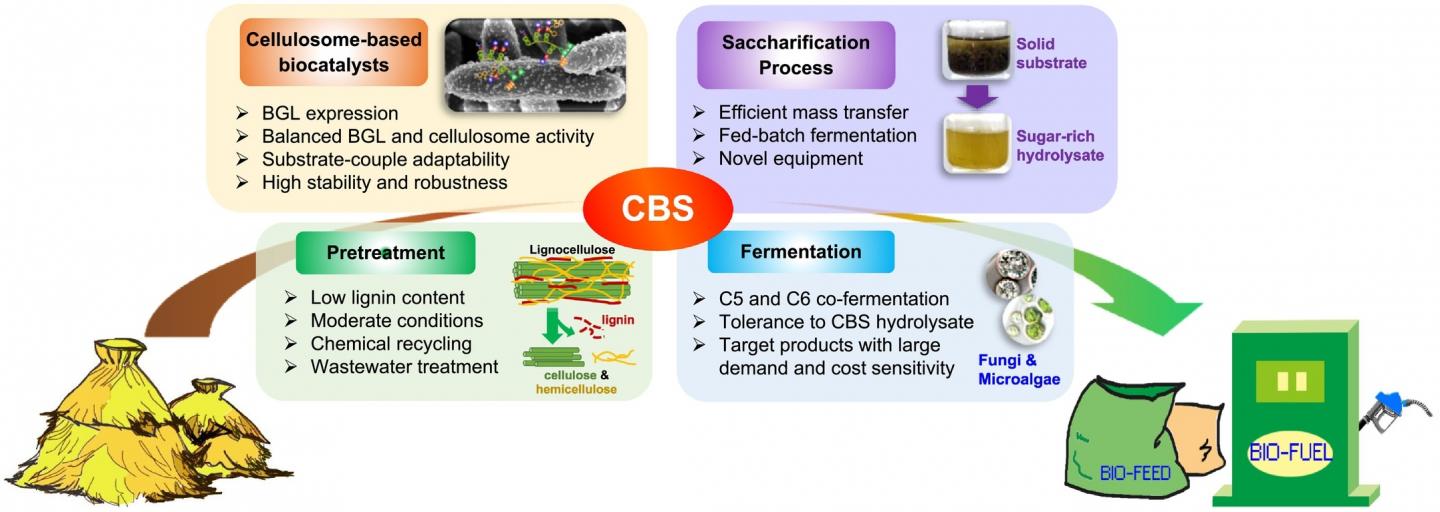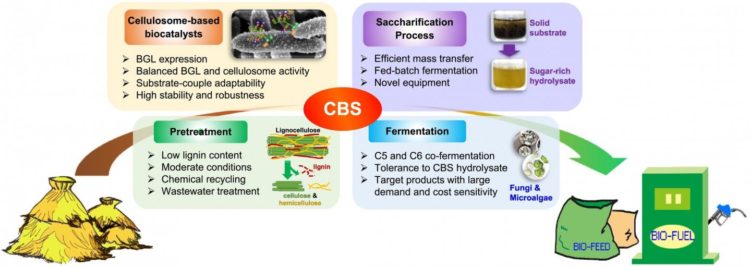
Credit: LIU Yajun
Fuel, animal feed, other major carbon-rich products could have a sustainable replacement with the help of a new approach to processing a plant biomass material produced naturally by plants during photosynthesis. Called lignocellulose, it comprises half of dry plant matter.
Researchers published a review of the work and current status on Feb. 24 in Biotechnology Advances.
“Lignocellulosic biomass is the most abundant sustainable carbon source on the planet and has enormous potential to substitute fossil resources on the premise of cost-effective conversion,” said LIU Yajun, paper author and researcher from the Qingdao Institute of Bioenergy and Bioprocess Technology (QIBEBT). “Lignocellulosic residues, especially the agricultural lignocellulosic wastes, represent one of the best substitutes of fossil resources because of its low price, high availability and wide distribution.”
The estimated annual world output of lignocellulosic biomass is more than 200 billion tons, providing an extensive, renewable resource – if it can be converted into a useful form.
“Lignocellulosic biomass is recalcitrant and difficult to deconstruct,” LIU said.
The main component of lignocellulose is cellulose, the tough material responsible for the strong structure of plant cell walls. Lignocellulose bioconversion to biofuels and biochemicals is possible, but, according the LIU, the cost and efficiency of the enzymes used to initiate the conversion is a concern.
Previously proposed conversion methods involve separately producing enzymes, breaking down the lignocellulose, and then fermenting the resulting sugar or doing both simultaneously. The new method proposed by LIU and his team is called consolidated bio-saccharification, during which whole-cell biocatalysts are employed for lignocellulose deconstruction processing and the fermentation process is entirely separated.
Known as consolidated bio-saccharification, or CBS, this strategy aims for a final product of fermentable sugars, rather than end products such as biofuel. The produced sugars can then be used as the platform chemical in fermentation for later processes that produce biofuel or other biochemicals.
“CBS is considered promising to lead lignocellulose bioconversion into the real world because it shows tremendous advantages in reducing enzyme production costs and streamlining operational processes,” LIU said. “However, as a newly developed technology, CBS still needs improvement and innovation of existing processes and instruments to make breakthroughs in the real world.”
LIU and her team are currently piloting a demonstration of CBS, intending to provide further evidence of the method’s industrial applications and scalability.
###
Media Contact
CHENG Jing
[email protected]
Original Source
http://english.
Related Journal Article
http://dx.






